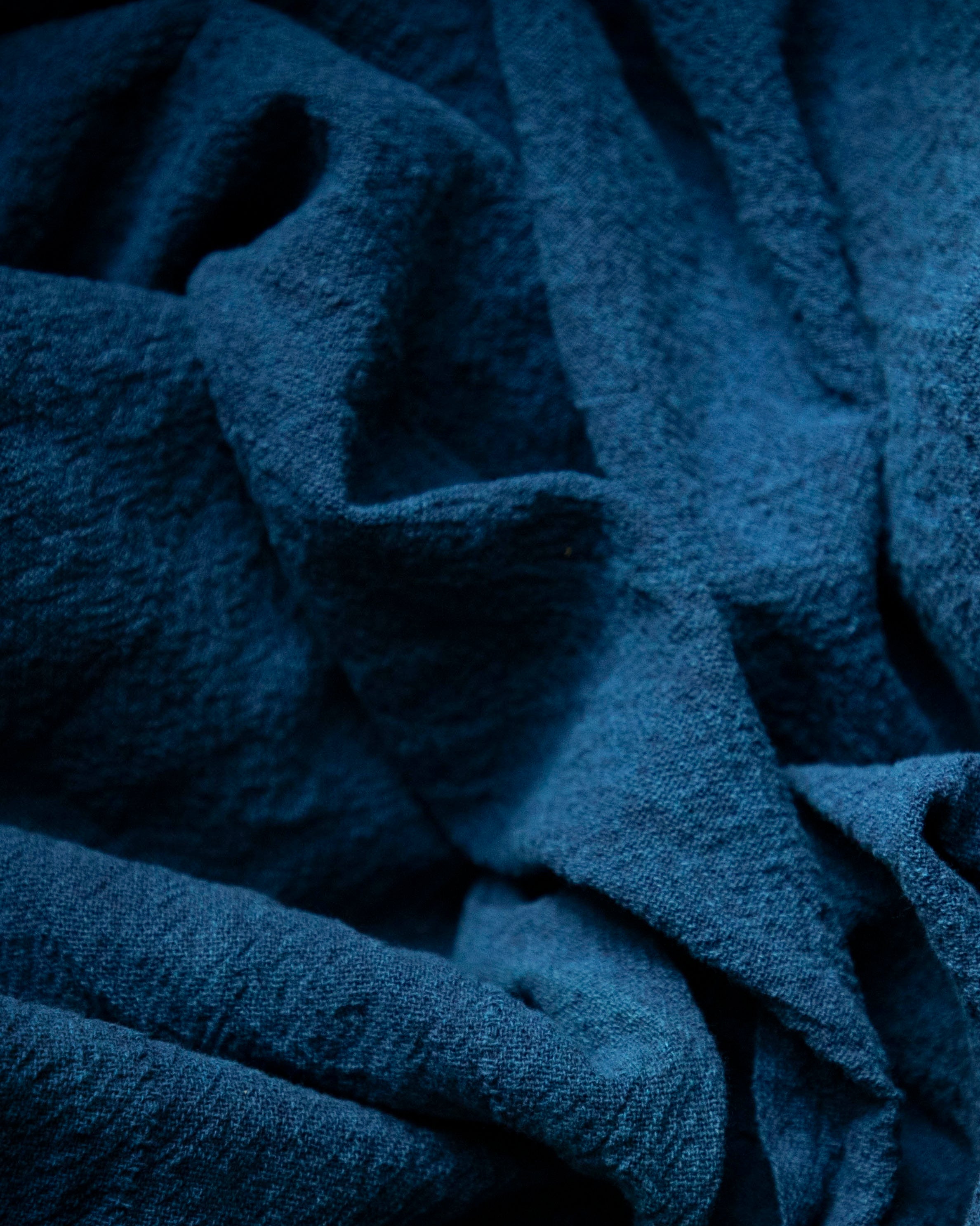The fabrics used to adorn tables or the ribbons used to wrap flowers and gifts may seem harmless, but their production and use can leave a lasting impact on the environment. Synthetic textiles, which dominate the global market, come with a hidden cost for the planet.

The Dark Side of Synthetic Textiles
Synthetic fabrics like polyester, nylon, and acrylic are everywhere—from fast fashion and accessories to home furnishings and event decor. While these materials are celebrated for being durable, stain-resistant, and wrinkle-resistant, their environmental impact is undeniable.
- Microplastic Pollution
Washing synthetic fabrics sheds tiny microplastic fibers that enter wastewater systems and, ultimately, rivers and oceans. These particles harm marine ecosystems and infiltrate the food chain, showing up in seafood and even drinking water. - Energy-Intensive Production
Synthetic fibers are made from petrochemicals derived from fossil fuels, such as crude oil and natural gas. The manufacturing process is energy-heavy, contributing significantly to greenhouse gas emissions and depleting non-renewable resources. Polyester alone accounts for over 50% of all textiles produced globally, amplifying the environmental strain. - Non-Biodegradability
Unlike natural materials, synthetics resist decomposition. Polyester fabrics tossed into a landfill can take hundreds or even thousands of years to break down, persisting as waste for generations to come. Worse still, as these materials degrade over time, they fragment into even smaller pieces, compounding the microplastic pollution problem further. -
Chemical Waste
Manufacturing synthetic textiles also involves the use of harmful dyes and chemicals. These pollutants often seep into waterways, harming aquatic life and exposing workers and communities to toxic substances.
Choosing Natural Textiles

Switching to natural textiles made from fibers like silk, cotton, or linen reflects your commitment to a more sustainable lifestyle. Here’s why:
- Eco-Friendly and Sustainable
Natural fibers are renewable and require fewer resources during production. For example, while cotton does require water, it avoids the greenhouse gas emissions associated with synthetic alternatives. When sourced responsibly, these materials further minimize environmental harm. - Biodegradability
Natural fibers naturally decompose back into the earth at the end of their life cycle. They will break down into organic matter, without leaving behind toxic residues or permanent microplastics. - Durable and Timeless
Natural materials are durable and age gracefully. High-quality natural textiles can withstand wear and tear, and often improve with continued use. - Reduced Water Pollution
Unlike synthetic fabrics, natural fibers don’t release microplastics during washing. This small yet significant difference contributes to cleaner waterways and healthier aquatic ecosystems.
BEWARE of Fakes
In recent years, the trend of using unique ribbons to adorn wedding flowers has gained immense popularity, and for good reason. Ribbons can beautifully reflect the bride’s personality and style while tying together the bridal party’s colors to create a cohesive, polished look.
However, with this growing demand has come a wave of misleading claims. Many companies manipulate terminology to make you believe you’re purchasing 100% silk ribbons when, in reality, they’re selling synthetic alternatives.
However, with this growing demand has come a wave of misleading claims. Many companies manipulate terminology to make you believe you’re purchasing 100% silk ribbons when, in reality, they’re selling synthetic alternatives.
It’s natural to assume that ribbons listed as “silk” or names like satin or chiffon are inherently made of silk, but there’s a bit more to the story. The term “satin” actually refers to the weave, not the fabric itself, so manufactures of ribbons can use the word "satin" to lead you into thinking that the ribbon is made from real silk. "Satin" ribbons sold in craft stores and florist supply stores are most often made from polyester or nylon.
You will often see the word “silk” as a descriptive term—again to mislead you into believing the fabric itself is made from silk. Unless they are explicitly labeled as 100% Silk, they are most likely not. A key indicator of authenticity is the price: 100% silk and silk satin ribbons are naturally more expensive, reflecting their superior quality and craftsmanship (stay tuned for “Not All Silk Is Created Equally”).
Click HERE to learn more about our 100% Natural Textiles



